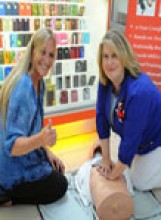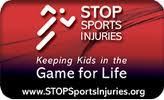Archive for May, 2012
12 Reasons To Go To The ER
Posted by: | CommentsAccidents and injuries can occur at any time. Sometimes it may be difficult to determine if injury or symptoms are serious enough for immediate medical attention. Though this is not an all-inclusive list, here are a few general guidelines to help you decide if you should make a trip to the ER?
- Loss of consciousness. Even if only briefly.
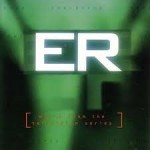
- Signs of a Heart Attack – such asdifficulty breathing, chest pressure, numbness in any arm and profuse sweating.
- Signs of a Stroke – Unable to smileon both sides of face, difficulty in raising either arm, speech impairment.
- Shortness of breath.
- Bleeding that doesn’t stop after 10 minutes.
- Poisoning.
- Insect bite or sting where breathing becomes difficult or worsens.
- Major injury, such as a head trauma, dislocation or if bone is showing.
- Coughing up blood.
- Persistent or severe vomiting.
- Suicidal feelings.
- Unexplained disorientation or drowsiness.
In general, if you are questioning whether or not to go to the Emergency Room, it would be best to default on the side of safety and seek immediate medical attention.
Which Public Bathroom Stall to Use?
Posted by: | Comments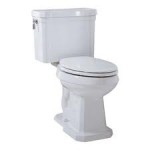 In a public restroom does it make a difference in which stall you should use? Surprisingly the answer is yes. The center stall has more exposure to the floating droplets of water that are expelled during the flushing process. These droplets can carry germs, urine and feces which land on the toilet seat and handle. You can’t catch an STD from a toilet seat, but you can become ill by touching contaminated surfaces and then neglecting to wash your hands.
In a public restroom does it make a difference in which stall you should use? Surprisingly the answer is yes. The center stall has more exposure to the floating droplets of water that are expelled during the flushing process. These droplets can carry germs, urine and feces which land on the toilet seat and handle. You can’t catch an STD from a toilet seat, but you can become ill by touching contaminated surfaces and then neglecting to wash your hands.
Practice safe hygiene by always washing your hands with soap and water after using the restroom. Use a paper towel when opening the restroom door . Your best bet on the safest stall – select the stall that is the farthest to the left or right, away from the center of the restroom.
Dry Drowning
Posted by: | Comments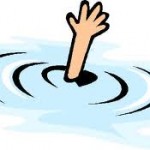 Dry Drowning is essentially drowning, but without the body of water as the immediate cause. This can happen anywhere from one to 24 hours after having spent time in a pool or other water source.
Dry Drowning is essentially drowning, but without the body of water as the immediate cause. This can happen anywhere from one to 24 hours after having spent time in a pool or other water source.
What happens is a small amount of water is aspirated into the lungs. This water is either absorbed into the bloodstream causing an imbalance of electrolytes, diluting the blood and causing an abnormal heart rhythm, or it prevents the normal absorption of oxygen into the blood system causing either cardiac arrest or possible brain damage.
Approximately 4,000 people die each year from drowning, of these about 10% to 15% can be classified as dry drowning. This is a significant number especially since high percentages are children.
In most cases of dry drowning, a person’s behavior may seem to be quite normal after they have been in the water. But there are a few signs to look for to help identify if there is a potential problem.
A consistent cough that continues for a half hour or more, shortness of breath, pain in the chest, lethargy or a dramatic change in their normal behavior, such as becoming combative or cranky should prompt you to seek immediate medical attention.
Victims of dry drowning have the best chance of survival by being treated at a medical facility. If the victim loses consciousness and stops breathing, immediately call 9-1-1 and begin CPR by compressing the chest 30 times in a row, then deliver 2 rescue ventilation.
Now that summer is here and we begin to spend more time and activities around water, remember the signs to look for concerning dry drowning. It can happen to adults as well as children. If you are not sure, always fault on the side of caution and have the person checked by a physician. Let’s be safe not sorry.
Best Sunscreens
Posted by: | CommentsConsumers Report Health came out with their “recommended” or “Best Buy” report for sunscreens? With summer starting this month, Consumers Report came out with this year’s recommendation for the highest rate sunscreens. The following 9 sunscreens got excellent marks for protection from UVA and UVB rays, even after being immersed in water. This is early information, since this report will not be published until the July 2011 Consumer Report.
These three sunscreens received the Best Buy rating:
- Up & Up Sports SPF 30
- No-Ad with Aloe and Vitamin E SPF 45
- Equate Baby SPF 50
Six others were recommended:
- Banana Boat Sport Performance SPF 30
- Coppertone Sport Ultra Sweatproof SPF 30
- CVS Fast Cover Sport SPF 30
- Walgreens Sport SPF 50
- Ocean Potion Kids Instant Dry Mist SPF 50
- Banana Boat Sport Performance SPF 100
These sunscreens received a thumbs down rating from the Environmental Working Group (EWG):
- Hawaiian Tropic Baby Stick Sunscreen SPF 50
- Baby Blanket SunBlankie Towelette SPF 45+
- Coppertone Water Babies Sunscreen Lotion SPF 70+
- Rite Aid Kids Sunscreen Spray Lotion
- Elizabeth Arden-Eight Hour Cream Sun Defense for Face SPF 50
Deaths Due to Rip Tides or Currents
Posted by: | CommentsWith the longer summer days more people are spending time at the beach enjoying the fun and ocean. What most of us don’t know is that the most successful killer in the ocean is not the great white shark or deadly jellyfish. The most dangerous killer is the ocean its self. Over 100 beach-goers drown each year just in the United States. Most of these drowning’s occur because of a phenomenon called rip tides or rip currents.
Just this past 4th of July weekend seven people were swept out into the ocean in the Carmel area in two separate incidents. The unfortunate part was the one person who did not survive was the Good Samaritan who entered the water to try and offer assistance to the original people caught in the rip current.
Rip currents occur when waves breaking at different parts of the beach carve out channels in the sand where the water returns towards the ocean. As these channels build the water rushes through canals with greater force. These currents can easily pull a victim, even in waist depth water, out into the ocean. Those who chose to fight and swim against this current end in exhaustion and possibly death.
If you happen to be caught in one of these currents please follow the recommendation of the National Weather Service:
When at the beach:
- Whenever possible, swim at a lifeguard-protected beach.
- Never swim alone.
- Learn how to swim in the surf. It’s not the same as swimming in a pool or lake.
- Be cautious at all times, especially when swimming at unguarded beaches. If in doubt, don’t go out.
- Obey all instructions and orders from lifeguards. Lifeguards are trained to identify potential hazards. Ask a lifeguard about the conditions before entering the water. This is part of their job.
- Stay at least 100 feet away from piers and jetties. Permanent rip currents often exist along side these structures.
- Pay especially close attention to children and elderly when at the beach. Even in shallow water, wave action can cause loss of footing.
If caught in a rip current:
- Remain calm to conserve energy and think clearly.
- Never fight against the current.
- Think of it like a treadmill that cannot be turned off, which you need to step to the side of.
- Swim out of the current in a direction following the shoreline. When out of the current, swim at an angle–away from the current–towards shore.
- If you are unable to swim out of the rip current, float or calmly tread water. When out of the current, swim towards shore.
- If you are still unable to reach shore, draw attention to yourself by waving your arm and yelling for help.
If you see someone in trouble, don’t become a victim too:
- Get help from a lifeguard.
- If a lifeguard is not available, have someone call 9-1-1.
- Throw the rip current victim something that floats–a lifejacket, a cooler, an inflatable ball.
- Yell instructions on how to escape.
- Remember, many people drown while trying to save someone else from a rip current.
Can Dogs Die From Heat Stroke?
Posted by: | CommentsAbsolutely, in fact during the summer months heat illnesses are one of the leading causes for an emergency Vet visit. Unlike humans, dogs do not have sweat glands and all internal heat is released from their body’s by panting, which can make dogs more susceptible to heat exhaustion if excited or exercised too vigorously during hot days. Signs of a dog in heat exhaustion are:
- Increased rectal temperature, normal temperature range is 100.5 – 102.5.(over 104° requires action, over 106° is a dire emergency).
- Vigorous panting.
- Gums become a dark red.
- Dry mucus membranes (specifically around the gums).
- Lying down and unwilling to get up.
- Collapse and/or loss of consciousness.
- Thick saliva.
- Dizziness or disorientation.
If you suspect heat exhaustion, stop all activity and get the dog into shade or a cooler environment. Place wet rags on the foot pads and around the dogs neck. If you use water to cool them, make sure it is temped and not extremely cold water. Try not to use ice, ice causes blood vessels to constrict and will prevent the core from cooling properly. Place fans to blow cool air on a dogs coat.
If not treated, heat exhaustion can lead to heat stroke which is a life threatening condition. This happens when the core body temperature is above 105° or higher. At this temperature brain and organ damage begins. Dogs breeds with short noses, such as pugs, bulldogs and mastiffs are more susceptible and need to be watched more closely.
To prevent heat exhaustion and heat stroke:
- Never leave your dog in a car.
- A dogs body temperature can elevate into the danger zone in less than 20 minutes.
- Use moderate activities during hot days.
- Have plenty of water for your dog to drink.
- Give your dog ample opportunities to rest in the shade.
Some dogs can recover fully from heat stroke if it is caught early enough. Others suffer permanent organ damage and require lifelong treatment. Sadly, many dogs do not survive heat stroke. Prevention is the key to keeping your dog safe during warmer weather.
When Do You Need Stitches?
Posted by: | CommentsWhat are the signs of a wound which would indicate that for proper healing it will need stitches? First off, stopping the bleeding is always your first priority. Best practice is to use direct pressure upon the wound site. Elevating the wound above the heart is no longer a recommended treatment for bleeding by the American Heart Association.
Clean the wound to remove any dirt or debris. Generally plain soap and water work best. Wounds should be addressed within 8 hours, though in certain situations stitches can be administered up to 24 hours. The longer the delay the higher probability of bacteria setting in. So it is best to get medical attention as soon as reasonably possible.
Now that the bleeding has stopped and the wound has been cleaned, let’s look for certain signs that would indicate sutures or stitches would be required. The following are wounds or cuts that most likely will need the assistance of stitches:
- Any cut that is deep where muscleor yellow fatty tissue is visible.
- Wounds 1 inch or longer in length.
- Cuts around joints, where the movement of the joint would prevent proper healing.
- Jagged or gaping wounds.
- Torn sections with either an open flap or three sides torn away.
- Cuts to the face or head.
The emergency room is well equipped to handle cuts and wounds. These doctors put in stitches several times a day and are well versed in the process, but cuts to the face should be treated by a plastic surgeon to reduce the possibility of excessive scaring.
Stitches can remain in place from 5 to 14 days depending upon the location of the wound. Always keep stitches dry for the first 24 hours to prevent infections. Afterward immediately dry the affected area after bathing. Clean your stitches twice a day and apply an antibiotic ointment. If pus, increased redness and swelling occur or if the wound begins to smell bad, the wound maybe infected and see your physician immediately.
Cardiac Arrest From Baseball?
Posted by: | CommentsCan a child suffer from cardiac arrest while playing baseball? Actually yes, and it’s not only in baseball. There have been recorded incidents in football, basketball, hockey, karate and even in soccer. Before everybody begins pulling their child from all sports, let me explain that this is a very rare condition.
“Commotio Cordis” happens when a person receives a blow to the chest at a very specific time during a heartbeat, within a milli-second. After the heart squeezes out blood, it goes through a resetting process before the next contraction. If a person receives a blow to the chest during this resetting period, the heart can begin to quiver. This quivering action is called ventricular fibrillation and in most situations, the method to cure this condition is called defibrillation, which is done with the use of an AED (Automated External Defibrillator).
Though this condition is rare it is always best to have coaches and other personnel trained in CPR. Make sure 911 is called immediately and if possible have your organization consider purchasing and having available an AED. Studies have shown that resuscitation rates increase significantly when an AED is used within three minutes of a victim going into ventricular fibrillation. The longer it takes for this to happen the chances of survival decrease sharply. In most cases waiting for the ambulance to arrive, may be too late.
Commotio cordis is scary, but very rare and is unlikely to happen to your child. Encourage your children to play sports and other physical activities, just be prepared to act in case of an emergency.
Will Your Toothbrush Make You Sick?
Posted by: | CommentsThe answer can possibly be yes. There are approximately 700 species of bacteria that can live on your toothbrush. On average your mouth harbors anywhere between 30 to 70 different kinds of bacteria, even with good hygiene. The plaque you remove from your teeth, as you brush, is loaded with bacteria, which in the end ends up on your toothbrush.
At any given time you toothbrush can be a haven for 100 million bacteria. Though not all of these bacteria are harmful (even some can actually be helpful) there are still many of the nasty ones still present. Most likely your toothbrush will not make you ill. But can it? The answer is yes, if it’s not properly used and stored.
Just like you wouldn’t store your dining plates and glasses next to your toilet, you shouldn’t do the same with your toothbrush. Every time you flush, an invisible plume of vapor is released from your toilet and can hang in the air for several minutes. These contaminated water vapors easily travel and can end up on surfaces that are close by, such as your toothbrush.
Bacteria like moist places, after using and rinsing your toothbrush, store in an up-right position to let it dry. Do not lay it down where moisture can become trapped and begin to multiply. Also do not store your toothbrush next to other toothbrushes. Children or spouses that are sick, can easily spread disease if their toothbrush comes into contact with yours.
The best way to reduce and limit bacteria, is to replace your toothbrush on a regular basis. Replacing your toothbrush every three to four months is the recommendation from the American Dental Association. Good oral hygiene not only helps in the care and appearance of your teeth, it can also have an effect on your heart, but that is for another article.
Are Cola’s Hurting Your Kidney’s?
Posted by: | Comments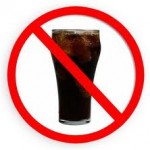 Yes, according to a NIH study of 900 people who drank 2 or more colas on a daily basis. In another study of 3,000 women who consumed diet sodas, there were indications of significant kidney function decline. On average each adult drinks up to 59 gallons of soft drinks per year. When you consider a small soda at many fast foods establishments can actually be the equivalent to two cans of a soft drink. You can see how it is easy to drink a substantial amount on a daily basis.
Yes, according to a NIH study of 900 people who drank 2 or more colas on a daily basis. In another study of 3,000 women who consumed diet sodas, there were indications of significant kidney function decline. On average each adult drinks up to 59 gallons of soft drinks per year. When you consider a small soda at many fast foods establishments can actually be the equivalent to two cans of a soft drink. You can see how it is easy to drink a substantial amount on a daily basis.
There is several associated risk factors with soft drinks such as hypertension, diabetes and kidney stones, more remarkably with individuals who consume the cola varieties. Some experts believe that the ingredient phosphoric acid may be the main influence for these disturbing factors. Some studies have also linked this ingredient to urinary changes that can promote kidney stones. Another double whammy for women is cola has long been associated with the increased factor of lower bone density, which can lead to osteoporosis and bone fractures later in life.
Here are a few things you can do. First, none of the studies showed risks associated with the consumption of just one cola drink per day. Also begin drinking more water. Water helps in flushing out your system of waste products. Fruit drinks and ice teas are other acceptable alternatives.
Lowering your consumption of colas and soft drinks on a daily basis, can significantly improve your living condition in the future.
